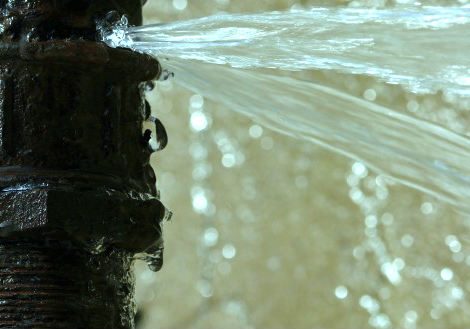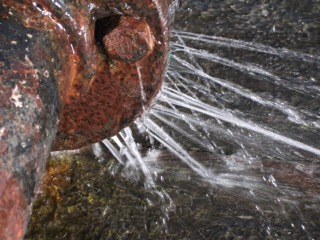Quick-Response Plumbing: Tips for Identifying and Dealing With Ruptured Pipes
Quick-Response Plumbing: Tips for Identifying and Dealing With Ruptured Pipes
Blog Article
Just how do you feel in relation to How to Install and Connect a New Dishwasher?

A burst pipeline is a significant emergency; you can just stand as you watch water you pay very much to rejoin with the earth. In even worse situations, you notice a swimming pool on your kitchen flooring, which is a great journey hazard, particularly if you have children around. If the pipe that burst remained in your wall surfaces, bad news: you may require to paint that entire section.
Exactly how can a tragedy like a ruptured pipe be stopped and handled? Well, by paying attention to your professional emergency plumbings and also following these policies.
Just how do I know when my pipes have ruptured?
Fluctuating water pressures
Pipelines do not just burst in a day. You might have discovered that your cooking area tap or shower does not run immediately when you turn the faucet. It might stop for a few secs and then blast you with even more pressure than typical.
In various other instances, the water might seem typical at first, then decrease in pressure after a few secs.
Wet walls and also water stains
Before a pipeline bursts, it will leak, the majority of times. If this persistent dripping goes undetected, the leak may finish right into a wide laceration in your pipeline. One easy method to prevent this emergency is to keep an eye out for wet walls advertisement water stains. These water stains will certainly lead you right to the leakage.
Puddles under pipes and sinks
When a pipe bursts, the discharge creates a puddle. It may appear that the pool is expanding in size, and despite how many times you mop the pool, in a couple of minutes, there's another one waiting to be cleaned up. Usually, you might not have the ability to trace the puddle to any type of noticeable pipelines. This is a sign to call a professional plumber.
Untraceable dripping noises
Pipe bursts can occur in the most unpleasant locations, like within concrete, inside walls, or under sinks. When your home goes quiet, you might have the ability to listen to an annoyingly relentless dripping noise. Even after you've checked your shower head as well as kitchen area tap, the leaking might proceed.
Precious visitor, the trickling might be originating from a pipeline inside your wall surfaces. There isn't much you can do concerning that, other than inform a specialist plumber.
Shut down the Water
When water ices up, it increases in quantity by concerning 9 percent. And also it increases with significant pressure: The stress inside pipelines might go from 40 extra pounds per square inch to 40,000 psi! No pipe can hold that much pressure, so it breaks open. The break may occur where the ice forms, but more often, it takes place where water stress discovers a vulnerable point in the pipeline. That may be inches and even feet from the frozen area. Find the water shutoff valve and turn off the water to prevent even more damages. You may likewise need to shut off the electrical power too, relying on where the leakages happens as well as how big it is.
Infected water
Many people assume a ruptured pipe is a one-way outlet. Quite the contrary. As water spurts of the hole or gash in your plumbing system, impurities discover their method.
Your water might be polluted from the source, so if you can, inspect if your water storage tank has any troubles. However, if your alcohol consumption water is provided and detoxified by the city government, you should call your plumber quickly if you see or smell anything amusing in your water.
What do I do when I identify a burst pipeline?
Your water meter will remain to run even while your water wastes. To decrease your losses, discover the major controls as well as transform the supply off. The water mains are an above-ground framework at the edge of your residential or commercial property.
How to Fix & Detect a Leaking Pipe
How Do I Know if a Pipe is Leaking?
Leak detection tests can help you determine if your pipe has a leak. Even if you don’t see an apparent leak, you should still conduct leak detection tests regularly to save water and money—and prevent major damage to your home.
Water meter. It can be helpful to figure out what your usual water meter usage numbers are and then monitor them regularly. To monitor your meter, first, turn off all water faucets in your home. Check the meter and write down the numbers. In a few hours, check the meter again. If the numbers have changed, you have a leak. Water gauge. Use a water gauge to test your water pressure. Your showerhead should produce a certain amount of water pressure based on its model and design. If the pressure is lower than it is supposed to be for that specific showerhead, your home likely has a leak. Puddles. Look inside your bathroom, laundry, and kitchen sink cabinets. Puddles around the cabinets or around toilets, tubs, showers, and washing machines indicate the presence of a leaking pipe. You may also notice loose tiles, peeling or flaking paint, or mold caused by water accumulation. Napkin test. Even if you don’t see any puddles, you may still have a leak. You can test for water leaks in the bathroom, laundry, and kitchen by wiping below-sink connections with a napkin, paper towel, or piece of toilet paper. If it becomes damp, you probably have a leaking pipe under the sink. Discolored walls. Walls that are discolored—usually with brown or yellow stains—or bulging might mean that they have been impacted by water damage caused by a leaking pipe. Smell. A leaky pipe will create sitting water, and over time, that water may develop a musty smell. If your home smells musty, but you can’t locate the source, it may be due to a leak. Steps for Fixing a Leaking Pipe
A leaky drain can be remedied by tightening the pipe base, replacing the drain seal, caulking the rim, and tightening the pipe nut. Similarly, a leaking toilet pipe can be treated by tightening the packing nut. You may also need to replace the valve. A leaky faucet may just need tightening or replacement of the washers. If that doesn’t work, consider replacing your faucet. If your pipe has a hole in it, you may want to use a pipe leak sealer or pipe leak tape. This quick fix for water pipe leaks can also temporarily fix a copper pipe leak. https://www.ahs.com/home-matters/quick-tips/how-to-tell-if-pipes-are-leaking/

I ran across that piece of writing on How to install a dishwasher safely when doing a search on the search engines. Sharing is nice. Helping people is fun. Many thanks for your time invested reading it.
Contact Us Today
Report this page